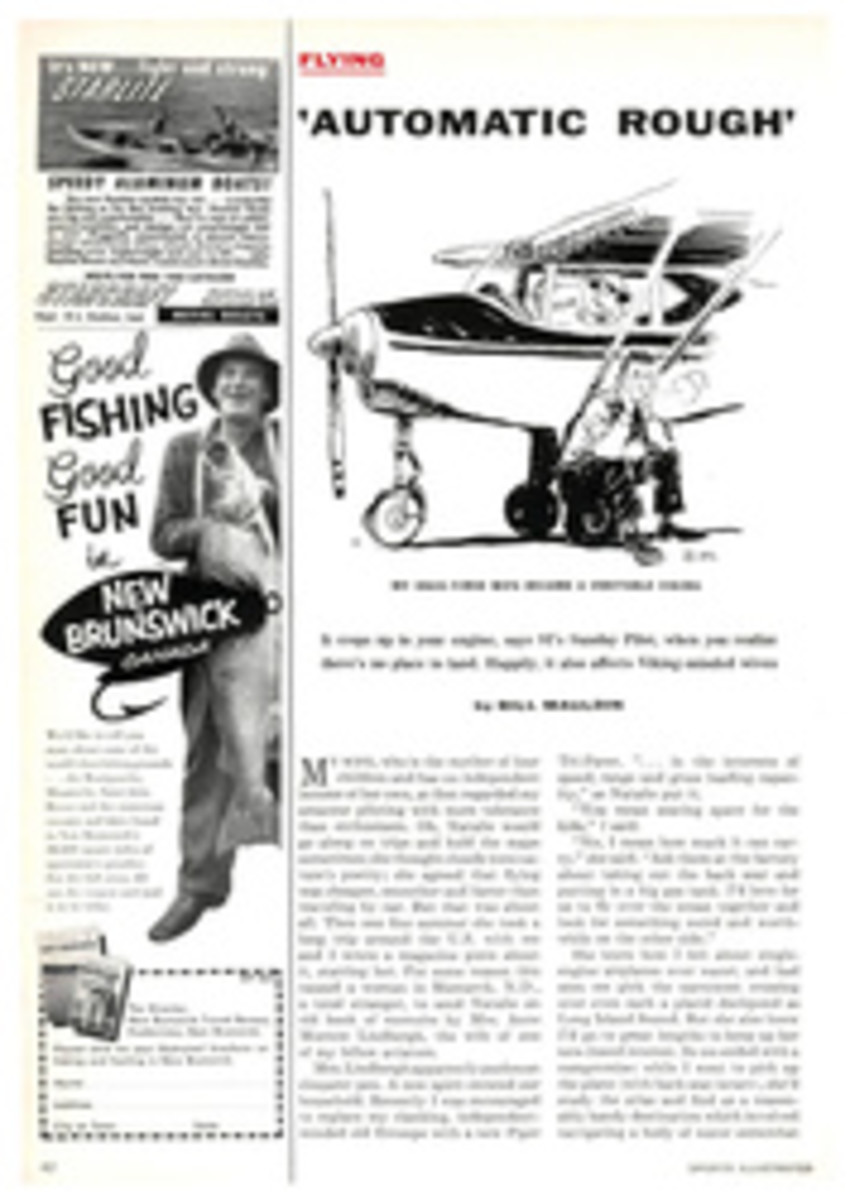
THE CHRYSLER 300
Sooner or later someone was bound to get the jump on the industry with "the highest powered car in America." The question was not so much by what margin of horses the leader would top its rivals but in what kind of car such an engine would be found. I must confess to a sense of relief that Chrysler flexed its muscles. Whatever may be said ot past styling errors, this is one firm with an enviable reputation for finely engineered automobiles of massive strength. Such is the new 300 hp Chrysler, a husky and handsome machine of sober elegance, which I recently tested in Detroit.
According to Mr. E. M. Braden, general sales manager, Chrysler Division, motor sports enthusiasts have been asking Chrysler for such a car ever since the introduction of the Fire Power V8 engine in 1951. What they wanted was a "ground-hugging hardtop...with many sports car characteristics," including "a modified Fire Power engine like those used at the Le Mans and Watkins Glen road races, and a simple unadorned exterior."
Well, they have got it. Although Chrysler engineers were politely evasive on whether they patterned the 300 dual carburetor manifold to that of the Cunningham, I have never driven a car that reminded me so much of the famous C4R of that name. It has the same feeling of immense latent "zoomph," the same relatively soft yet deceptively stable suspension; much the same positiveness of steering with a brisk self-centering action (but no power gimmicks)—although the ratio could be raised with some benefit. Because of the PowerFlite transmission, racing camshaft and compromise gear ratio, the low speed acceleration falls a little short of lightning; but in the middle and upper ranges the 300 really scores.
Your seat behind the wheel of the 300 is good—straight backed, fairly high, with the gracefully dropped hood and both front fenders clearly in view through a sweepingly curved windshield with 1,094 square inches of glass. The bench-type front seat, upholstered (like the rest of the interior) in fine quality brown hide, holds three comfortably and is manually adjustable so that it rises as it goes forward. Yet, at maximum elevation, there are still 4¾ inches of head clearance—remarkable considering the car's modest height of 60.1 inches.
As with other Chrysler products, the PowerFlite shift lever of the 300 is on the dashboard. In Drive, the normal upshift point from low to high ratio is about 17 mph, but if you tramp down the accelerator for a scat getaway, you can delay the automatic upshift to 65 mph. The PowerFlite downshifts itself at between 14 and 17 mph in absolute silence, without even a click.
"Low," explained Chrysler engineer Chester Garbacz, "is simply Drive with the upper ratio locked out. Set it in Low and see what the maximum speed is." I tried it and the speedometer indicated over 80 mph before valve crash set in. Incidentally the speedometer of the 300 goes up 15 mph at a clip and the subdivisions are hard to read. And there is no tachometer, which seems a real sin of omission in a sporting automobile with a price tag near $5,000.
A relatively modest claim of "about" 120 mph is made for the 300, but the car will do better than that. I twice hit an indicated 115 mph on a test strip and there was enough throttle left. The machine was rock-steady in the true sports car sense and the special thumb grips provided at nine and three o'clock on the steering wheel made good sense.
In addition to the special intake manifold, camshaft and dual exhaust, the engine has solid valve lifters in place of the conventional hydraulic tappets. This model also features modified rocker gear, higher compression, stiffer road springs and heavy duty shock absorbers. Yet the 300 is a true six-passenger car of 126-inch wheel-base, with plenty of leg room in the back—11½ inches from the rear seat edge to the front seat back—and an imposing trunk with 43 cubic feet of usable space. The Chrysler power brakes are the best I've yet encountered. Pedal pressure is light, but even in a panic stop action is progressive and not dangerously instantaneous.
The test car was finished in light cream (called "Platinum White") with brown leather and black carpets, but buyers will have a choice of gray, red or black exterior. Chrome wire wheels are optional equipment, but I am happy to report the 300 has no hood ornament and you can't buy one, even as an extra.
The Chrysler 300 Hardtop Coupe is a prime example of Detroit's new-born interest in sporting automobiles and every part of it bespeaks high-grade workmanship. At less than $5,000, this car has a definite place on the market. It yields nothing of luxurious comfort, roominess and practicability to other models in its price bracket, and may well outsell them on the score of performance.
PHOTO
AT 115 MPH ON THE TEST STRIP, THE CHRYSLER 300 STILL HAD POWER LEFT FOR PLENTY MORE AND RODE AS STEADILY AS A ROCK
PERFORMANCE AT A GLANCE
Acceleration through gears
(Low) 0—30 mph: 4.0 sees.
(Low) 0—60 mph: 9.5 sees.
(Low) 0—75 mph: 13.8 sees.
(Drive to Low) 30—60 mph: 5.8 secs.
Maximum speed obtained 115 mph
Maximum speed (estimated @ 5,200 rpm) 130 mph
Brake test (concrete surface) From 30 mph: 32 ft. 3 in.
Gas consumption (including heavy traffic and all tests) 8.95 mpg
Weather: clear & cold; 37°F; wind SW @ 13 mph.
Speedometer correction: At 60 mph read 63 mph; 5% fast.

